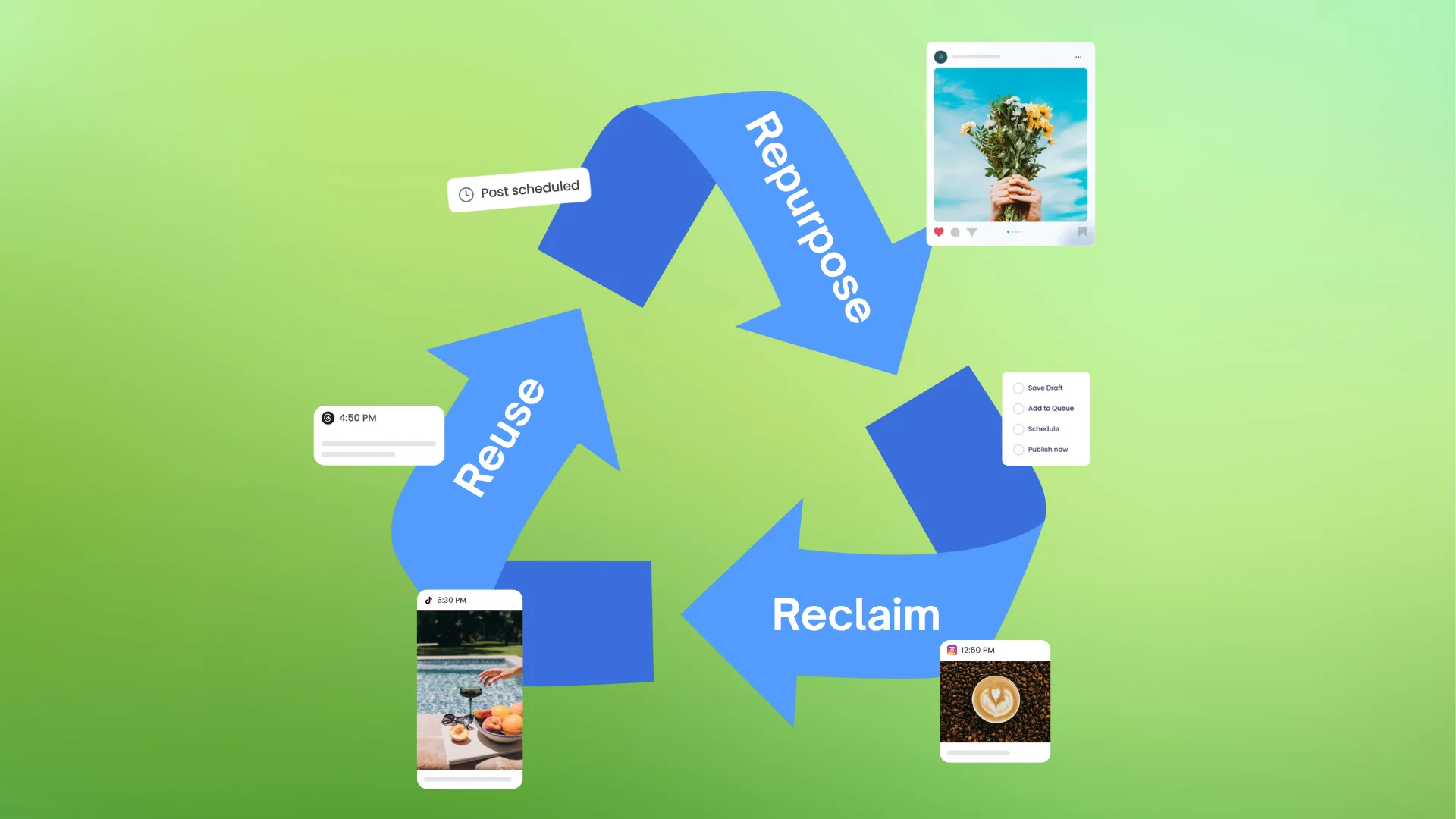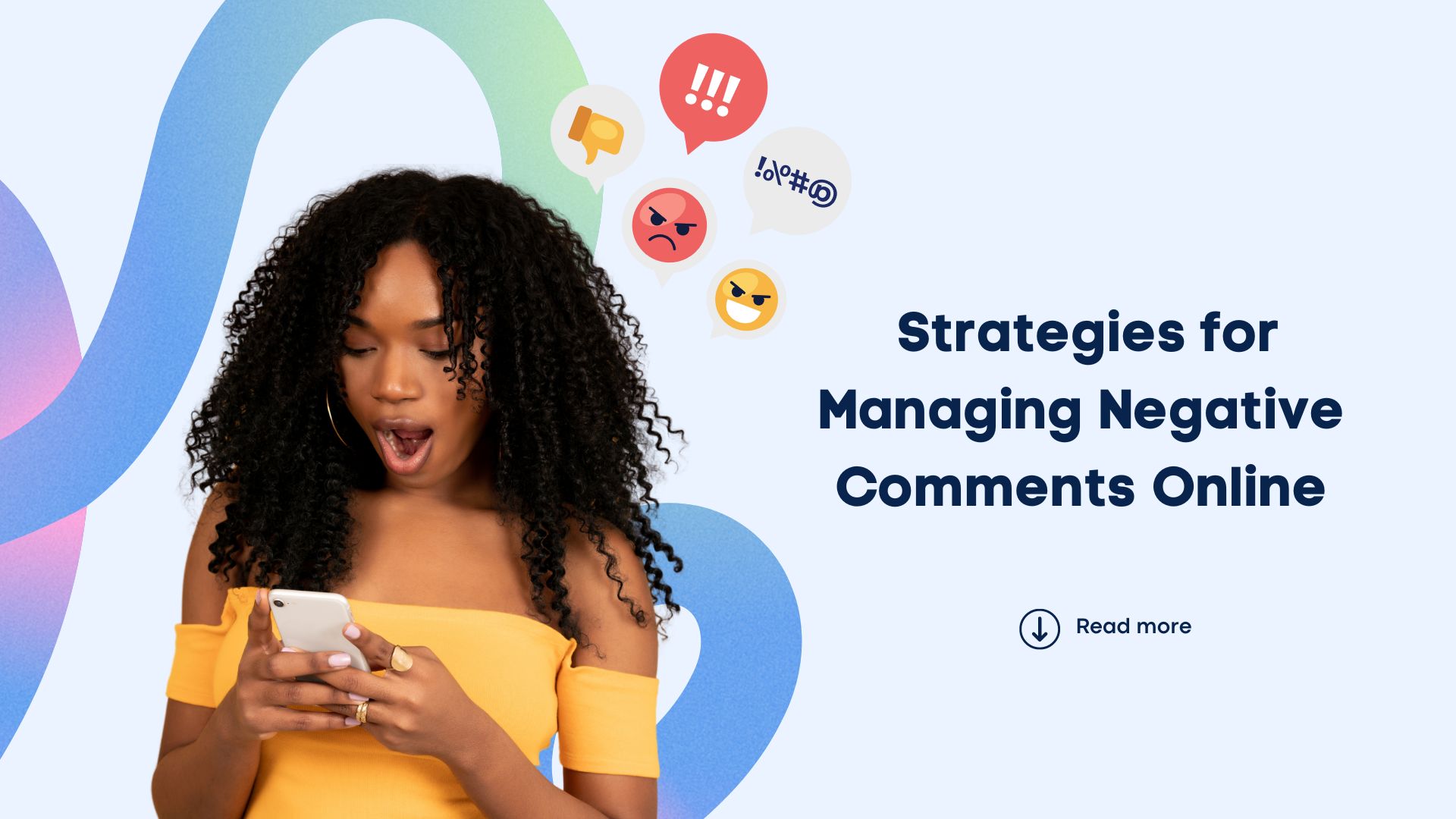New

Turn Your DMs Into Lead Gen!
Learn how to collect lead data from your DMs such as email addresses, phone numbers, and more right from your social inbox. If you are not yet automating your DMs your competitors are outpacing you.

How Something Social Saved 75% of Their Time and Increased Revenue by 15%
See how a fast-growing agency improved operations, cut down hours of manual work, and unlocked new revenue opportunities with Vista Social.
New

50 Unique Social Media Ideas for Consistent Content Creation
Discover 50 unique social media post ideas to engage your audience, grow your brand, and maintain a consistent content strategy with ease!

Mastering Content Reuse: The Key to a Consistent and Sustainable Posting Strategy
Published on October 3, 2024
6 min to read
Effective Strategies for Managing Negative Comments Online
Summarize with AI


Table of Content

In today’s digital age, where 67.1% of the world’s population are Internet users as of July 2024, strategies for managing negative comments have become crucial for brand reputation. Effective strategies for managing negative comments can turn potential crises into opportunities for growth and customer loyalty.
Imagine your brand as Baymax from Big Hero 6, calmly addressing negative feedback on social media with his signature care and empathy. Instead of letting criticism damage your image, you can show genuine concern and demonstrate that customer input truly matters.
Table of contents
Understanding the Impact of Negative Comments
Imagine your brand as a superhero, and negative comments are its kryptonite. But here’s the twist—what if you could harness that kryptonite and become even stronger? That’s the magic of effective comment management.
Did you know that responding to complaints on social media can boost customer advocacy by a whopping 25%? That’s right, your brand’s nemesis could become its secret weapon!
Why Negative Comments Matter
Negative comments are like wildfire. Left unchecked, these comments can spread faster than gossip at a high school reunion, potentially tanking your sales. But here’s the silver lining—negative feedback is like a treasure map, pointing directly to the X that marks areas for improvement you might have missed.
Common Sources of Negative Feedback
Negative feedback often surfaces across social media platforms, review sites, email channels, and customer support. Social media comments and reviews on sites like Yelp or Google can quickly gain attention, while private emails and product return forms reveal insights less publicly but just as critically.
Each platform serves as a window into your customers’ thoughts, offering opportunities to address complaints before they snowball. By staying vigilant and responding swiftly, brands can turn these critiques into valuable learning moments, boosting credibility and customer loyalty.
Detecting Negative Comments in Real Time
To manage negative comments effectively, businesses must find them quickly. By combining technology and human judgment, businesses can find and address negative comments promptly.
Utilize Social Media Monitoring Tools
Social media monitoring tools are essential for real-time detection of negative comments. These tools can track mentions of your brand, products, or services across various platforms, which allows you to identify potential issues promptly. By setting up alerts for specific keywords or even phrases, you can quickly pinpoint the negative sentiment and respond to it accordingly.
Your Team as Human Detectives
While technology and other tools can provide a solid foundation for detecting all the negative comments, human judgment is still incredibly crucial. Your team can serve as “human detectives” by carefully reviewing the content of the identified negative comments.
This is so they can assess the context, tone, and severity of the comments to determine if they warrant immediate attention. This human touch helps to ensure that automated systems don’t miss any important nuances or context.
Leverage Sentiment Analysis
Sentiment analysis, or opinion mining, is a very powerful technique for automatically analyzing the sentiment expressed in texts.
By utilizing algorithms and natural language processing, sentiment analysis tools like VistaSocial’s sentiment analysis can assess whether a comment is positive, negative, or neutral.
This helps you prioritize responses and identify trends in customer sentiments over time.
[Must read: How to Reply to Negative Facebook Comments and Reviews]
Strategies for Managing Negative Comments
Remember, negative comments will be unavoidable. According to Brandbastion, One in two millennials have complained about a brand on social media. Strategies for managing negative comments are important to maintaining your brand’s reputation and possibly making those customers your most loyal customers.
First and Foremost: DO NOT Ignore Negative Comments
If you think ignoring negative comments will improve things, you’re mistaken. Negative comments should be addressed. 65% of people will not buy from a brand if they don’t respond to the issue that needs to be addressed. Replying to negative comments can turn the tide in your favor; responding to them shows that you value your customers and that their feedback matters to you to improve your brand.
Respond Promptly and Give an Apology
Responding quickly can help protect your brand’s reputation, reducing the chances of it spreading quickly. 48% of consumers expect a response to their questions and complaints within 24 hours.
A sincere apology mixed with a quick response is like the perfect combo of empathy and action; it shows that you are committed to what you are doing, making them potential loyal customers through your excellent customer service.
Address Both Publicly and Privately
Addressing both in public and in private has different effects on consumers. 88% of consumers are influenced by online customer service reviews when making a buying decision. Addressing them publicly shows other consumers that you are attentive and take things seriously.
Try Vista Social for Free
A social media management platform that actually helps you grow with easy-to-use content planning, scheduling, engagement and analytics tools.
Get Started NowAddressing their comments privately gives them a personalized response, giving you a more detailed answer regarding their problems, and this shows them that there is an actual person managing the brand.
Maintain a Positive Tone and Constructive Approach
During these situations, try not to be like the Hulk and stay like Bruce Banner. No matter how negative the comments are, always keep a positive tone. Instead of arguing with your customers, always be calm and offer them solutions that you will take to resolve their problems, satisfying both the customers and onlookers.
Monitor and Filter Comments Proactively
The first step in developing strategies for managing negative comments is monitoring your social media accounts, where you have your brand.
Use tools that filter any inappropriate, offensive, or irrelevant comment to maintain a much better conversational environment. Once you see a negative comment, address it quickly, showing your attentiveness and dedication to your brand.
Leverage Feedback for Improvement
Use their feedback to improve your brand and give them much better service. Also, observe if there are any recurring issues to be resolved. This will help you see specific areas of your brand that need improvement, which will lead to trust in your business.
Ask your customers where things should be improved or changed, building your relationship with them and making them feel valued.
[Must read: Proven Strategies to Increase Customer Engagement on Social Media]
Building an Effective Comment Management Framework
Businesses need a clear plan to handle negative comments online. This plan should include rules for responding, procedures for escalating issues, and importantly training for employees.
A good plan helps companies respond consistently and effectively, protecting their reputation and this helps build positive relationships with customers.
Crafting a Winning Strategy for Negative Comments
Developing a solid plan for managing negative comments is essential to maintaining your brand’s reputation. Your strategy should outline clear goals, such as addressing concerns, preserving a positive image, or even strengthening customer loyalty.
By being prepared and thoughtful in your approach, you can turn potential setbacks into opportunities to showcase your brand’s commitment to customer satisfaction.
Empowering Your Team with Training
Empower your team to handle negative comments effectively by providing them with the necessary training. This training should cover many topics such as understanding customer emotions, active listening, conflict resolution, communication techniques, and company policies.
Equip your team with the skills to empathize with customers, actively listen to their concerns, and how to resolve conflicts effectively.
Guide them on how to communicate professionally and ensure that they are familiar with your company policies regarding negative comments and customer service.
By investing in training, you can empower your team to handle negative comments confidently and effectively, contributing to a positive customer experience.
Turning Negative Comments Into Positive Opportunities
Effectively managing negative comments is a crucial skill for businesses navigating the digital landscape. By responding promptly, showing empathy, and actively addressing concerns, you can turn these challenges into opportunities.
Negative feedback, when handled well, not only resolves customer issues but can also build stronger relationships by showing you care. Moreover, each piece of criticism provides valuable insights for continuous improvement.
Businesses that embrace this approach will see enhanced trust, improved brand reputation, and loyal customer advocacy.
In the end, turning a potentially damaging situation into a chance to demonstrate accountability can set your brand apart and foster long-term success.
P.S. If you’re new here, Vista Social is a robust social media management platform tailored for marketing agencies, freelancers, and social media managers. It features advanced tools to enhance collaboration, simplify workflows, and amplify the effectiveness of social media marketing.
FAQs on Strategies for Managing Negative Comments Online:
What can I offer as a compensation for their feedback?
To handle negative feedback, provide incentives, thank customers for their feedback, respond differently to each complaint, and use feedback to improve services. This shows you care and are taking action, which builds loyalty. Offer a discount, replace a part, or find a solution. Sometimes, a prompt and sympathetic reply can diffuse an unhappy customer’s complaint.
How do I avoid getting negative comments?
To minimize the risk of negative comments, businesses must prioritize customer satisfaction and healthy communication with clients. This involves improving product or service quality, engaging customers for feedback, addressing concerns promptly, optimizing processes, and correcting mistakes more frequently
About the Author
Content Writer
Content writer and copywriter with over 2 years of experience, specializing in VSL scriptwriting. I’ve worked with various brands to create compelling content. Passionate about storytelling that connects and converts. Loves cats, poetry, and skincare
Read with AI
Save time reading this article using your favorite AI tool
Summarize with AI
Never Miss a Trend
Our newsletter is packed with the hottest posts and latest news in social media.

You have many things to do.
Let us help you with social media.
Use our free plan to build momentum for your social media presence.
Or skip ahead and try our paid plan to scale your social media efforts.
P.S. It will be a piece of cake 🍰 with Vista Social
Subscribe to our Newsletter!
To stay updated on the latest and greatest Social Media news. We promise not to spam you!


